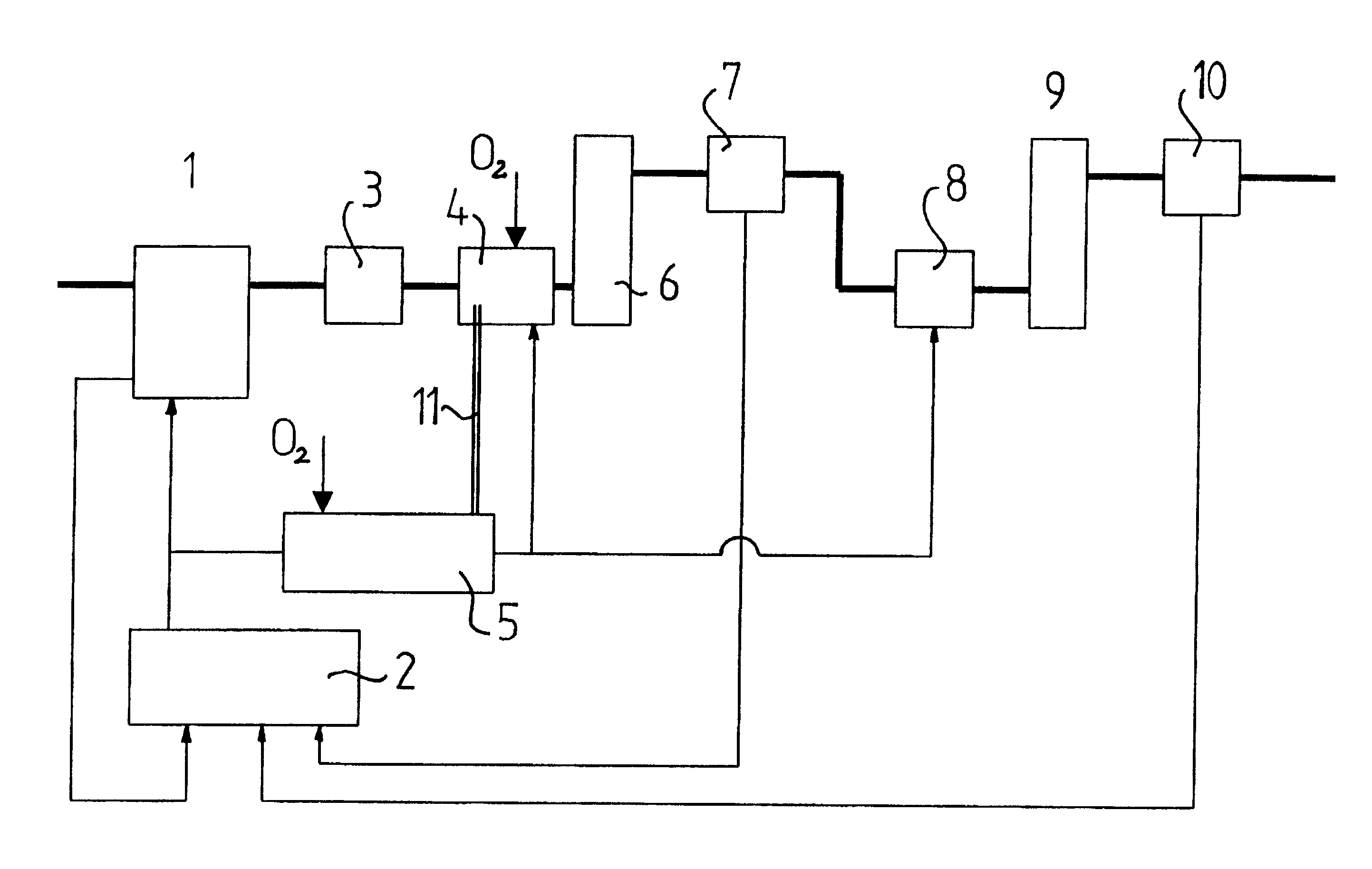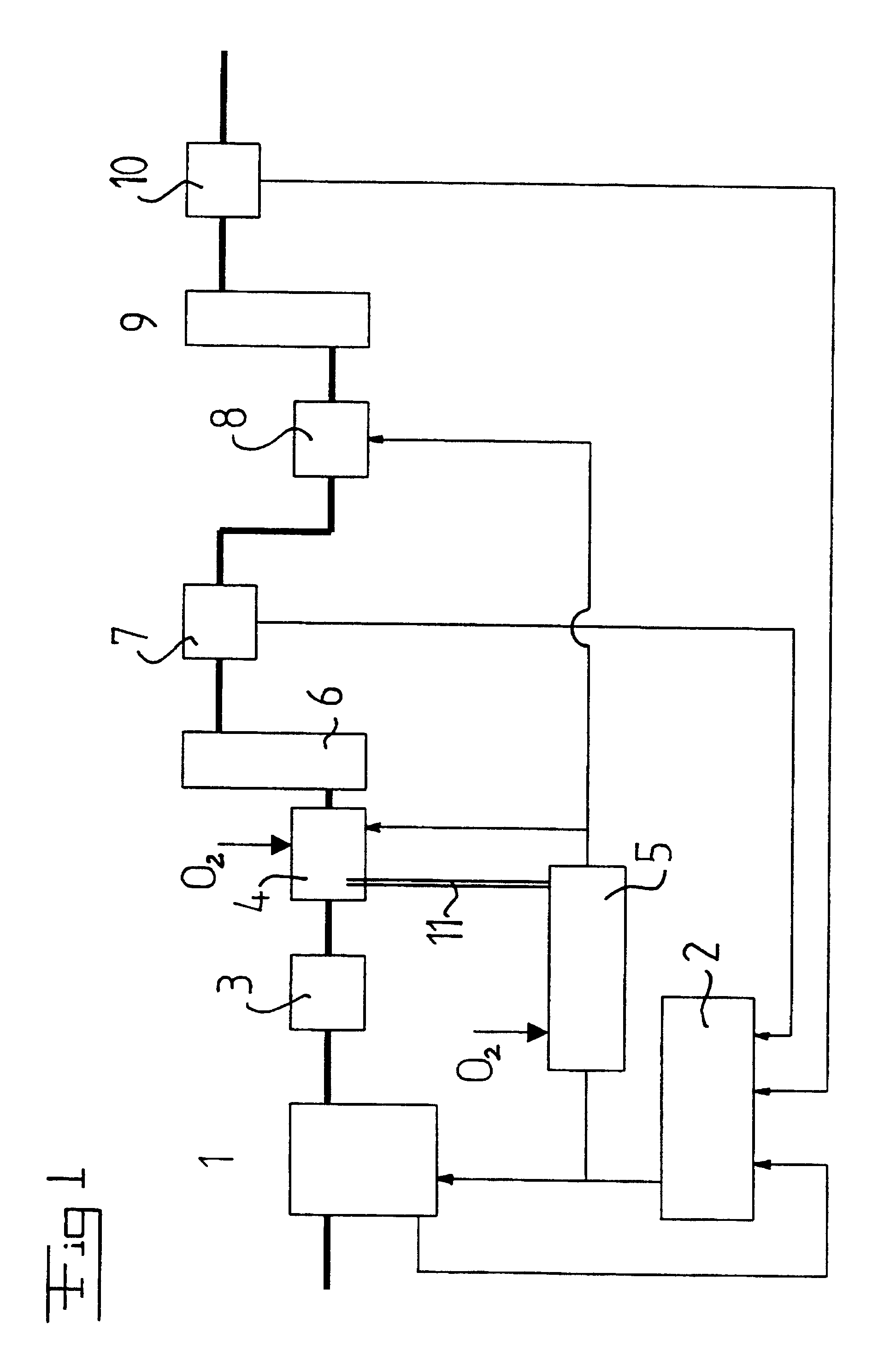Oxidized white liquor in an oxygen delignification process
a white liquor and oxygen delignification technology, applied in the direction of liquor oxidation, alkali lye regeneration, lithium compounds, etc., can solve the problems of limiting the amount of oxygen gas supplied, affecting the quality of the pulp, and restricting the possibility of increasing the delignification work. , to achieve the effect of improving the efficiency of oxygen delignification
- Summary
- Abstract
- Description
- Claims
- Application Information
AI Technical Summary
Benefits of technology
Problems solved by technology
Method used
Image
Examples
Embodiment Construction
FIG. 1 discloses schematically a method for an integrated treatment of cellulose pulp. Wood chips are supplied to a pulper 1 for producing a cellulose pulp and more particularly a sulphate pulp. The pulper 1 is supplied with white liquor from an integrated white liquor manufacture 2, the so called chemical recovering cycle. Used white liquor is recycled from the pulper 1 to the white liquor manufacture 2 in a manner known per se. From the pulper 1 the produced cellulose pulp is transported to the washing 3, which as such may include one or several washing stages. From the washing 3 the cellulose pulp is transported to a mixing device 4. FIG. 1 discloses one mixing device but the method may include two or several mixing devices provided after each other for the addition of chemicals. In the mixing device 4 the washed cellulose pulp is mixed with alkali in the form of oxidised white liquor, i.e. white liquor in which a substantial part of all or substantially all sulphur components ha...
PUM
| Property | Measurement | Unit |
|---|---|---|
| weight | aaaaa | aaaaa |
| temperature | aaaaa | aaaaa |
| temperature | aaaaa | aaaaa |
Abstract
Description
Claims
Application Information
 Login to View More
Login to View More - R&D
- Intellectual Property
- Life Sciences
- Materials
- Tech Scout
- Unparalleled Data Quality
- Higher Quality Content
- 60% Fewer Hallucinations
Browse by: Latest US Patents, China's latest patents, Technical Efficacy Thesaurus, Application Domain, Technology Topic, Popular Technical Reports.
© 2025 PatSnap. All rights reserved.Legal|Privacy policy|Modern Slavery Act Transparency Statement|Sitemap|About US| Contact US: help@patsnap.com


